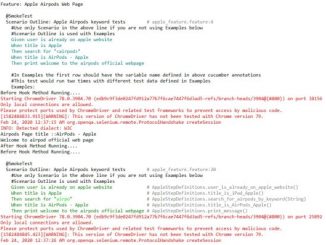Agile testing tutorials and how to content : Test-Driven Development (TDD), Behavior-Driven Development (BDD) and other agile approaches for software testing.
You all know Selenium tests are flaky by nature, slow to run, expensive to maintain and finding the root cause of a failure is not always easy. This presentation shows you how to shift your UI tests left with an Agile testing approach.
Both Selenium and Cucumber are popular open source test automation frameworks. In this article, Jessica Cyrus explains how to integrate Cucumber and Selenium WebDriver which allows defining automated tests in a language that could be easier to understand outside the software testing team.
When you inherit difficult code it can take weeks to become productive. Having the right tools for software testing and refactoring job and knowing how to use them makes a huge difference. Emily Bache explains this in a series of three posts that deal with approvals and mutation testing; the Lift-Up Conditional refactoring technique; replacing conditional with polymorphism.
Agile approaches aims to improve the collaboration between the development team and the end-users or the Product Owner in Scrum. As far as software testing is concerned, it is however deceptive to believe that this could happen without a strong contribution from software testing experts.
Faster software delivery through approaches like DevOps or Continuous Delivery impacts software testing practices. This article summarizes the steps that software testing teams can undertake in order to adapt to the fast development process in projects with Continuous Integration/Continuous Delivery (CI/CD).
Agile, DevOps, Continuous Delivery, Testing in Production: all these modern trends put pressure on the traditional approach to software testing in general and more specifically on the performance testing activity. In this article, V.M.Guruprasath explains issues created by the new context and proposes some possible solutions.
Acceptance tests are defined in this book as the test created by the customer in collaboration with the developer and the tester prior to implementation. They are not the traditional user acceptance tests performed after implementation. Although acceptance tests can be used at different development stages, Ken Pugh proposes mainly in this book an approach where all project stakeholders will collaborate to create tests that validate business requirements.








